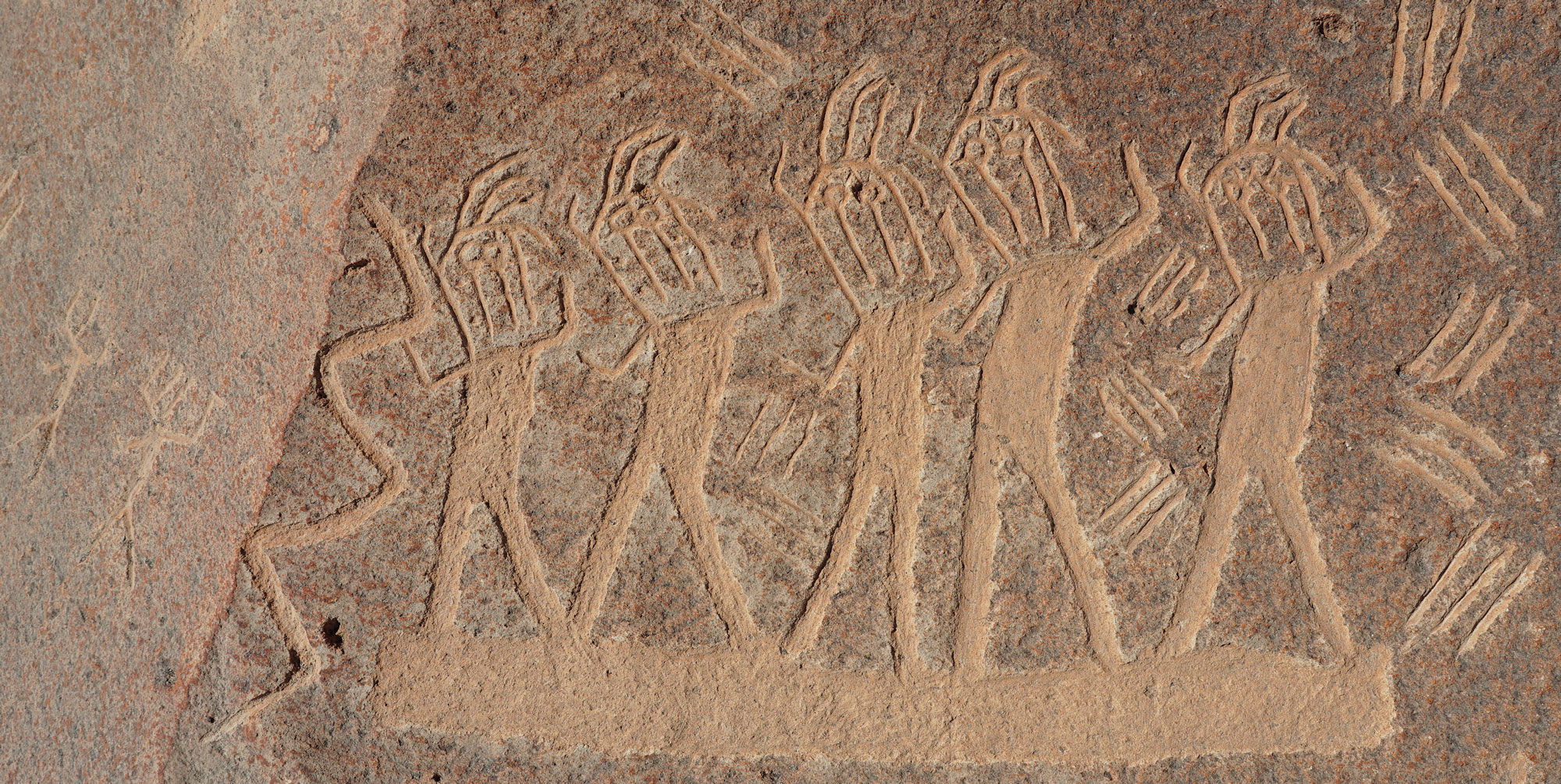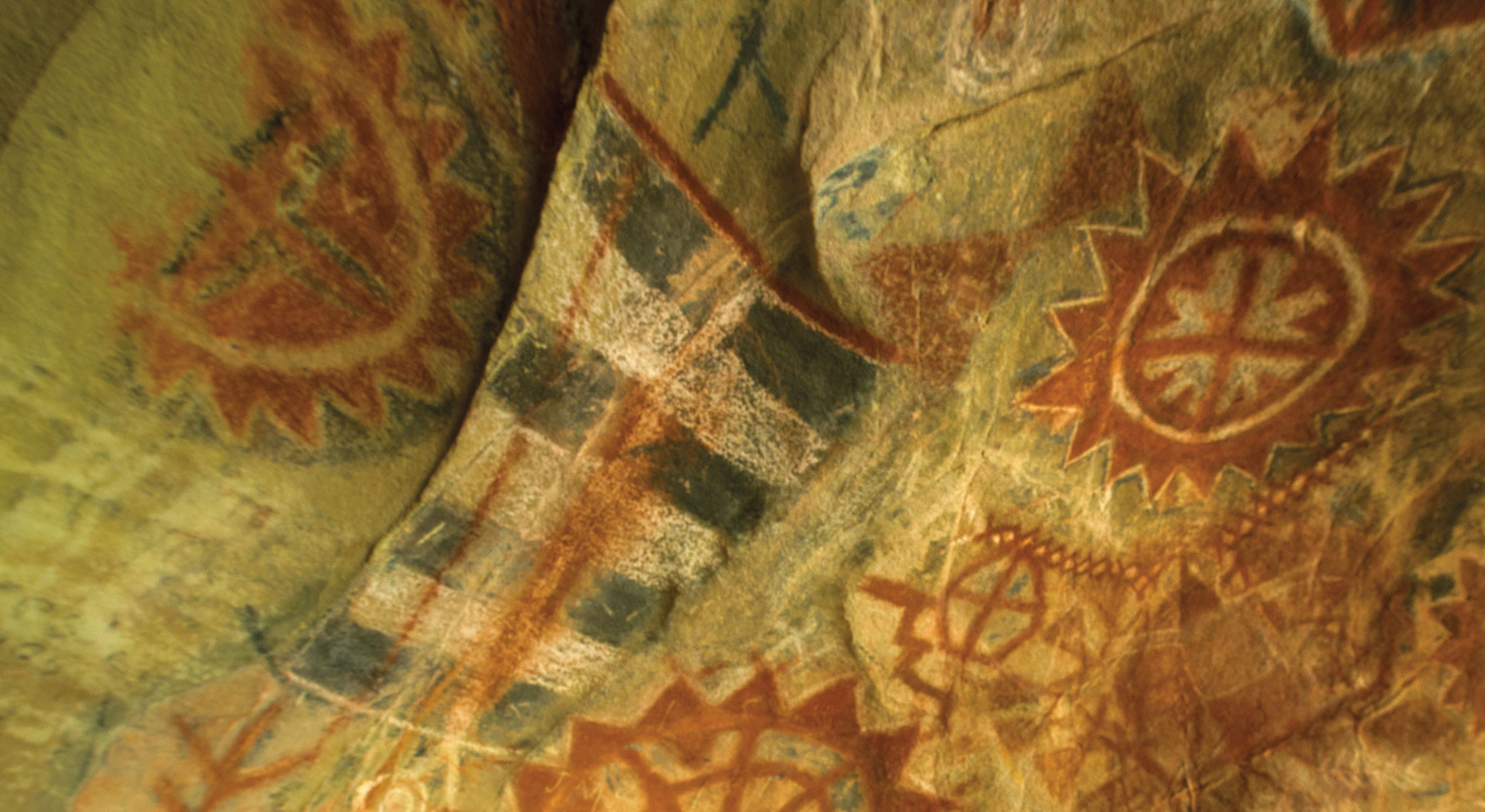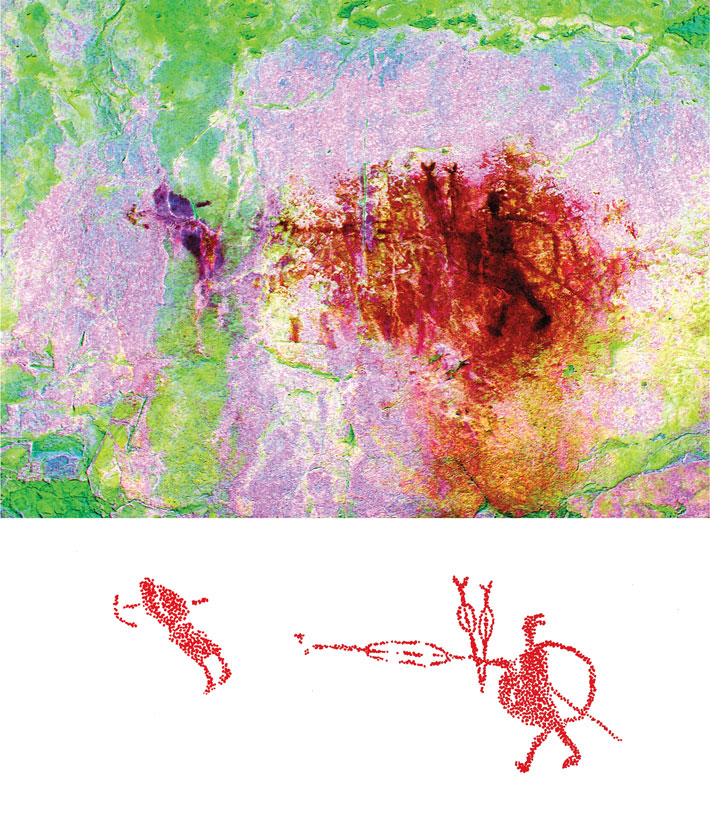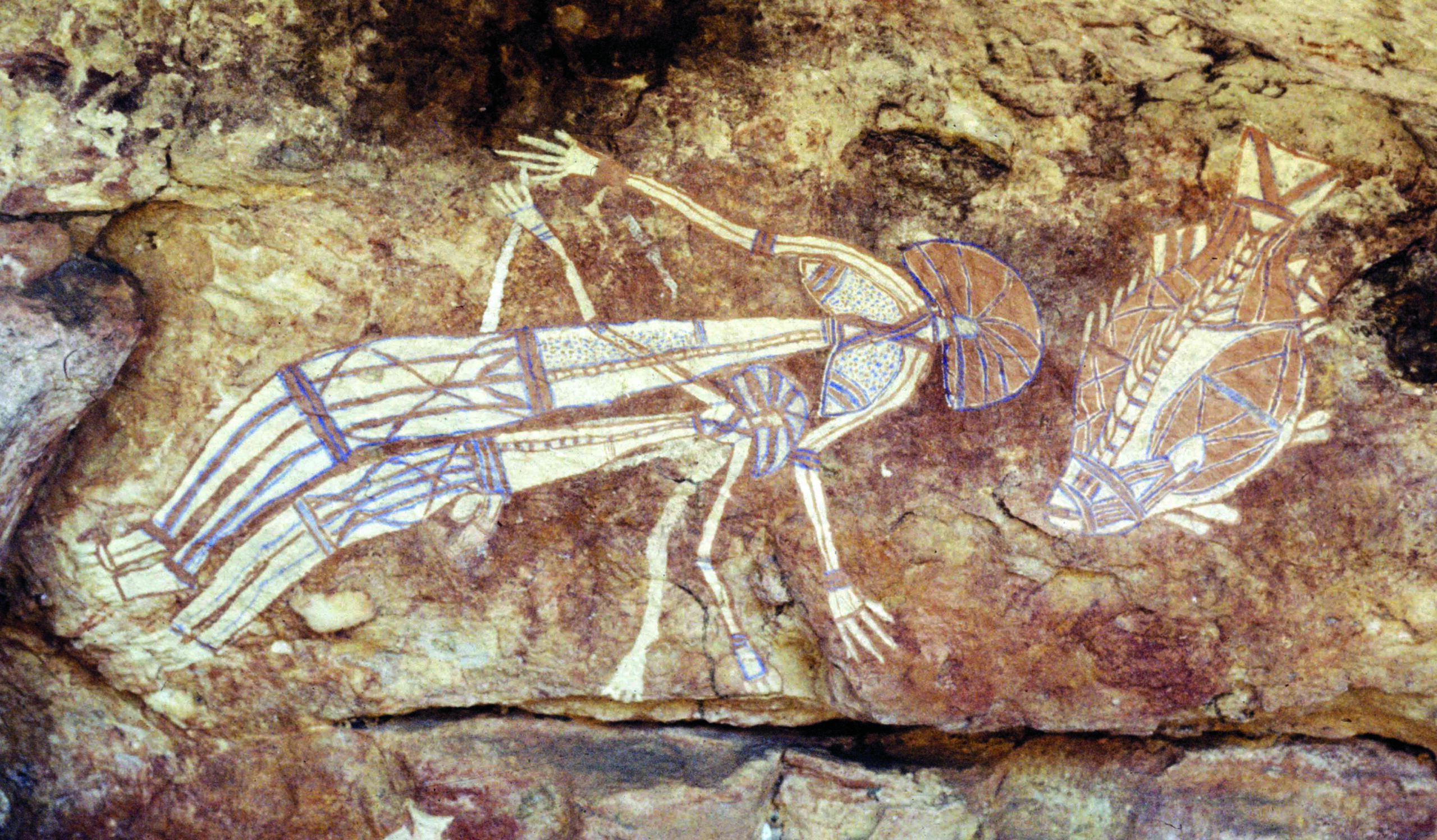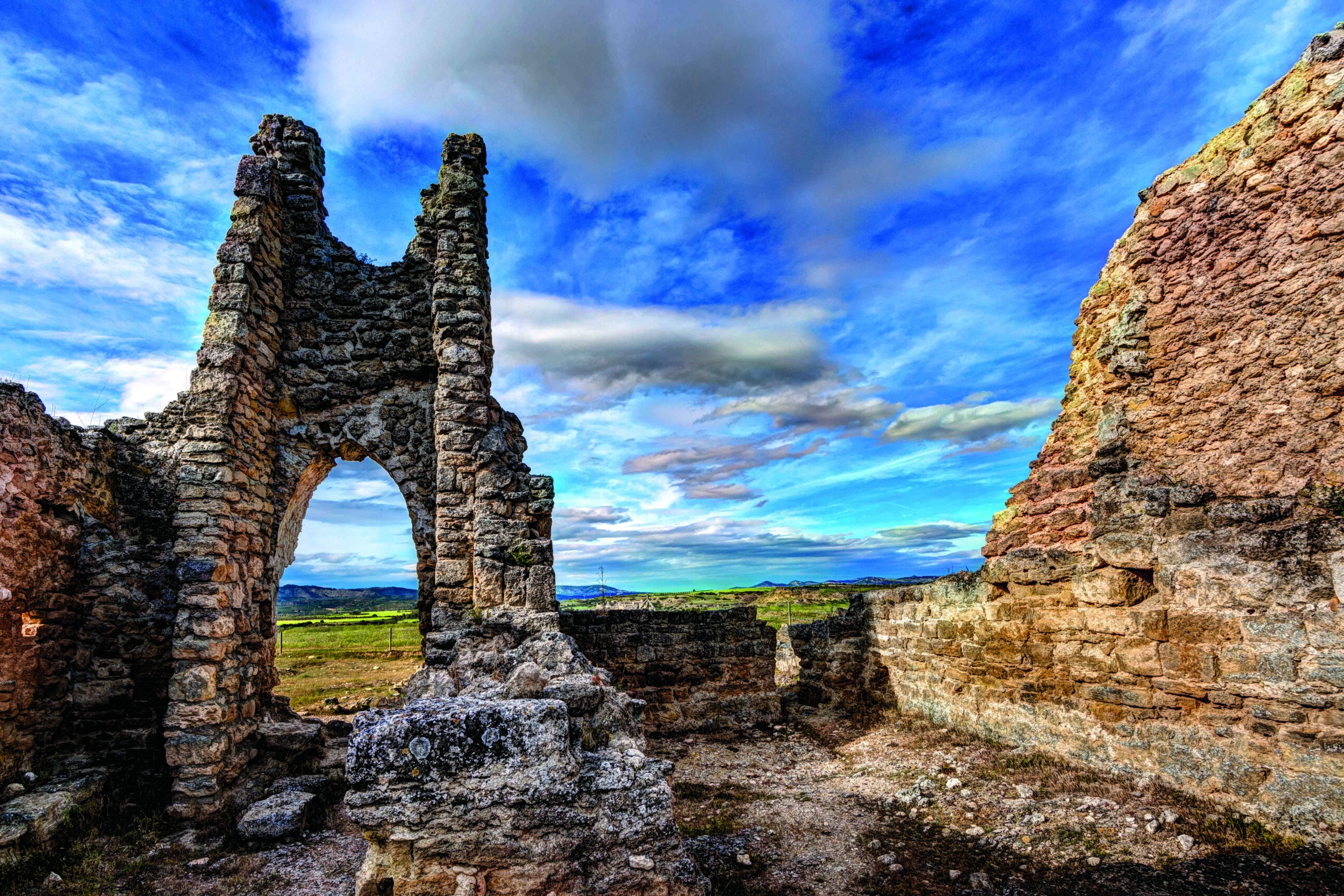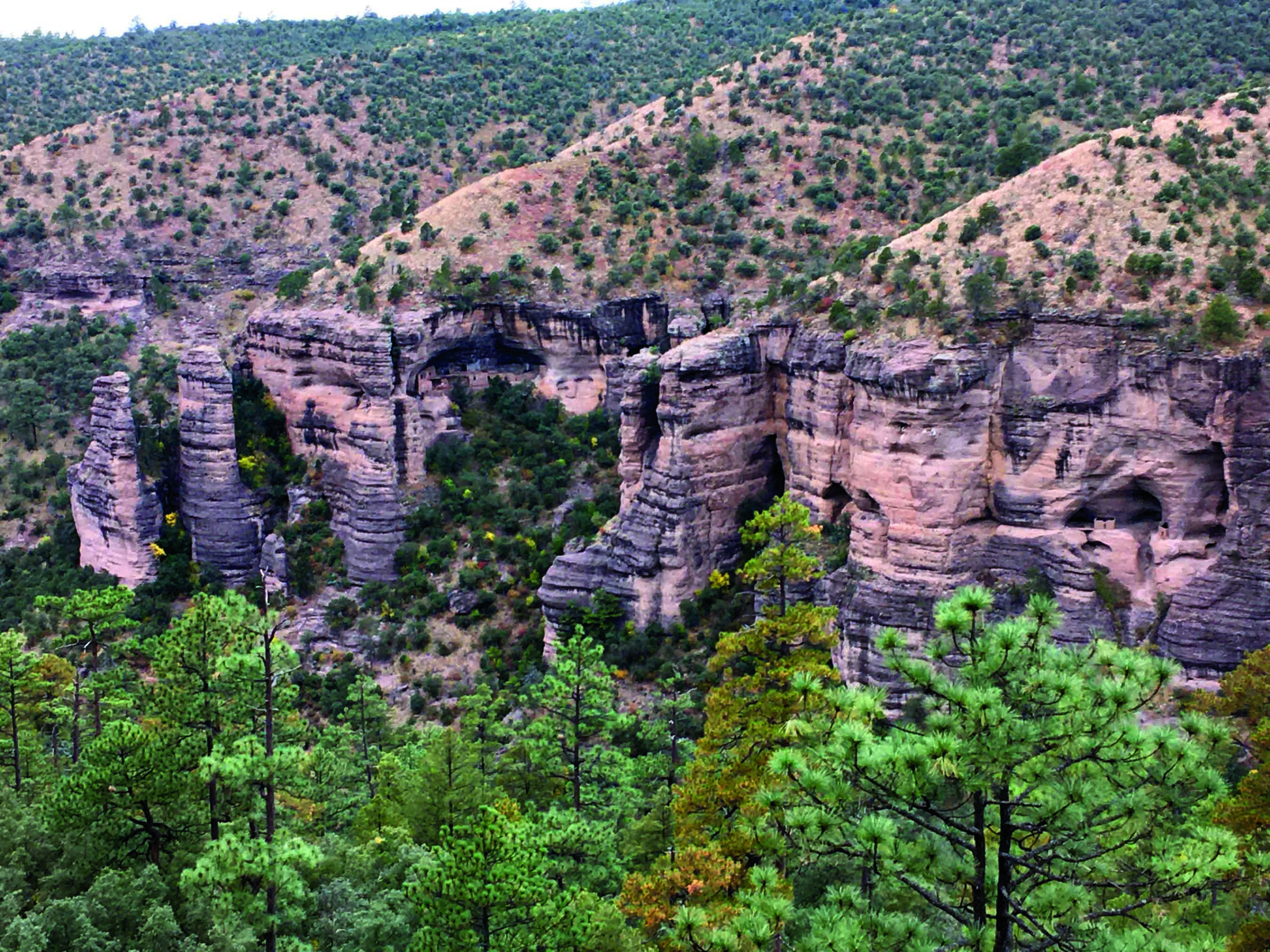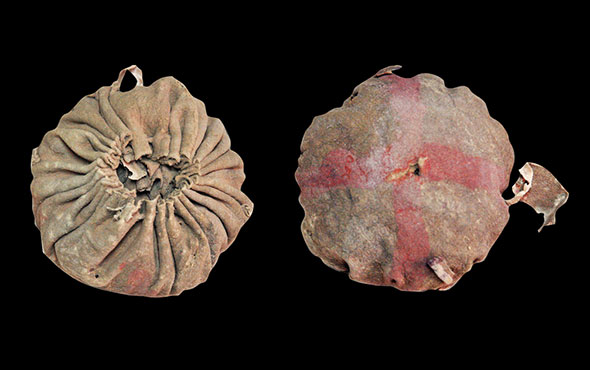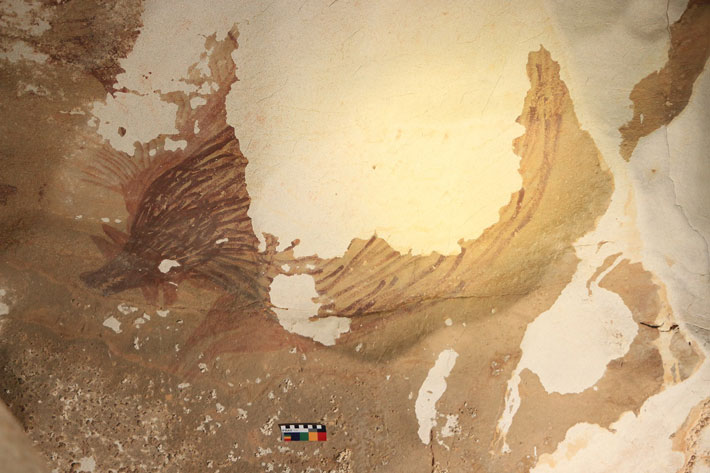
QUEENSLAND, AUSTRALIA—Cosmos Magazine reports that climate change is rapidly weathering rock art at the Maros-Pangkep site in Sulawesi, Indonesia, that dates to at least 44,000 years ago. Intergenerational custodians of the artworks and local archaeologists said the images are disappearing faster now than at any other time in living memory. One of the images, of a warty pig, is the oldest known depiction of an animal. The cave also contains hunting scenes and images thought to depict mystical beings. Jillian Huntley of Griffith University and her colleagues studied the limestone rock face and found evidence of salt crystallization. The salts, she explained, weaken the rock and cause it to flake off, damaging the artworks. “These processes are accelerated by increasing temperatures, more extreme weather,” Huntley said. The extremes include prolonged droughts, standing water from storms and floods, and local food production practices. “We are in a race against time to document and learn from this rock art before it is irrevocably damaged,” she added. For more on dating Sulawesi’s rock art, go to “Shock of the Old.”


